Cancelable Biometrics Vault: A Secure Key-Binding Biometric Cryptosystem Based on Chaffing and Winnowing
Osama Ouda,
Karthik Nandakumar,
Arun Ross

Auto-TLDR; Cancelable Biometrics Vault for Key-binding Biometric Cryptosystem Framework
Similar papers
SoftmaxOut Transformation-Permutation Network for Facial Template Protection
Hakyoung Lee, Cheng Yaw Low, Andrew Teoh

Auto-TLDR; SoftmaxOut Transformation-Permutation Network for C cancellable Biometrics
Abstract Slides Poster Similar
One-Shot Representational Learning for Joint Biometric and Device Authentication
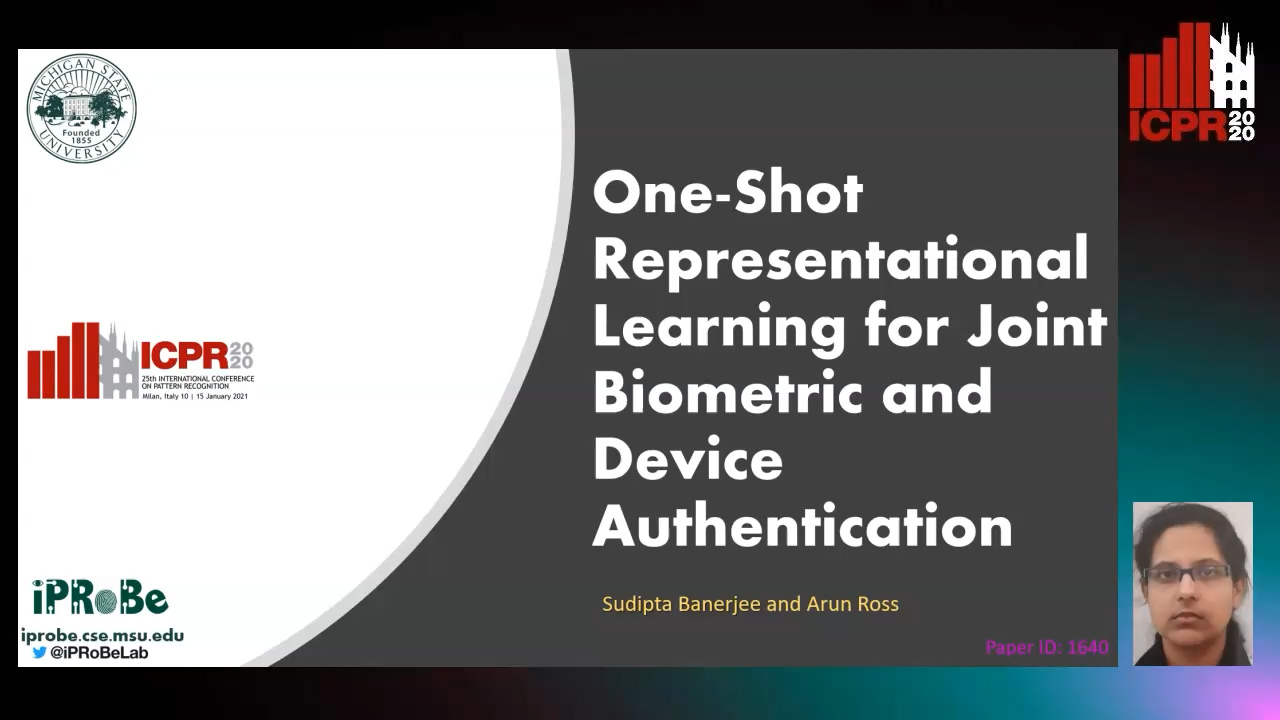
Auto-TLDR; Joint Biometric and Device Recognition from a Single Biometric Image
Abstract Slides Poster Similar
Joint Learning Multiple Curvature Descriptor for 3D Palmprint Recognition
Lunke Fei, Bob Zhang, Jie Wen, Chunwei Tian, Peng Liu, Shuping Zhao
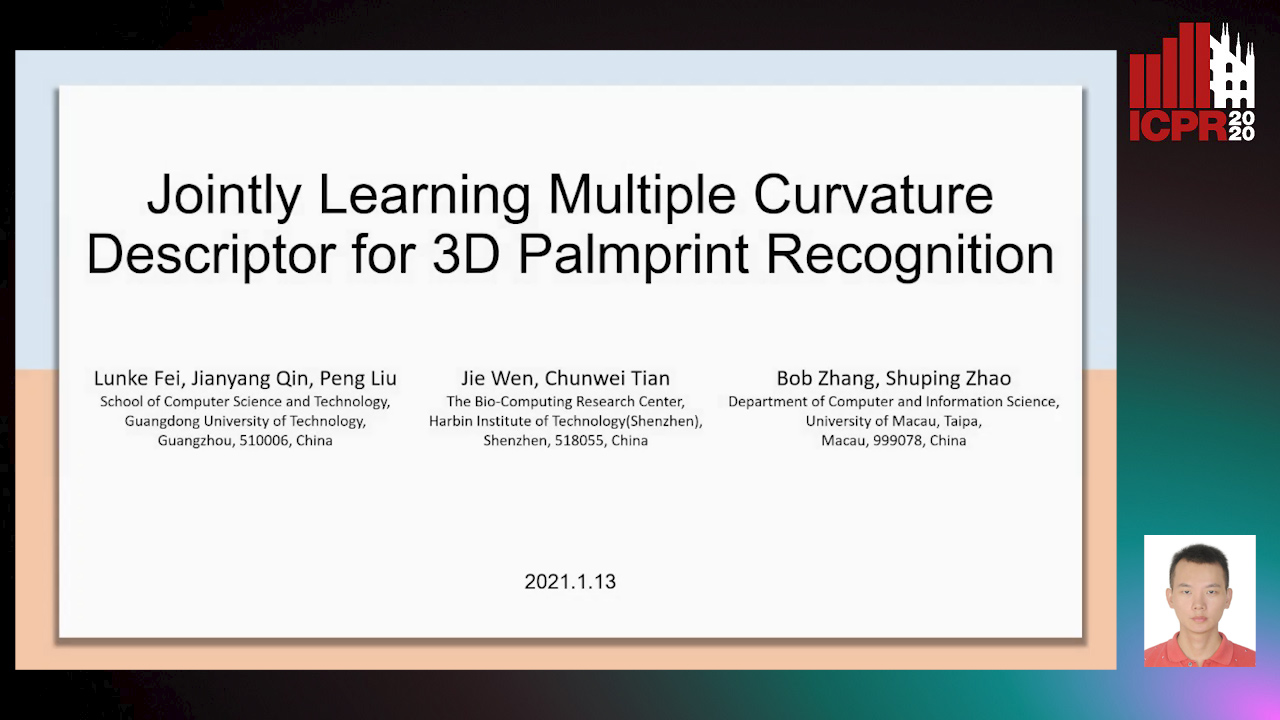
Auto-TLDR; Joint Feature Learning for 3D palmprint recognition using curvature data vectors
Abstract Slides Poster Similar
How Unique Is a Face: An Investigative Study
Michal Balazia, S L Happy, Francois Bremond, Antitza Dantcheva
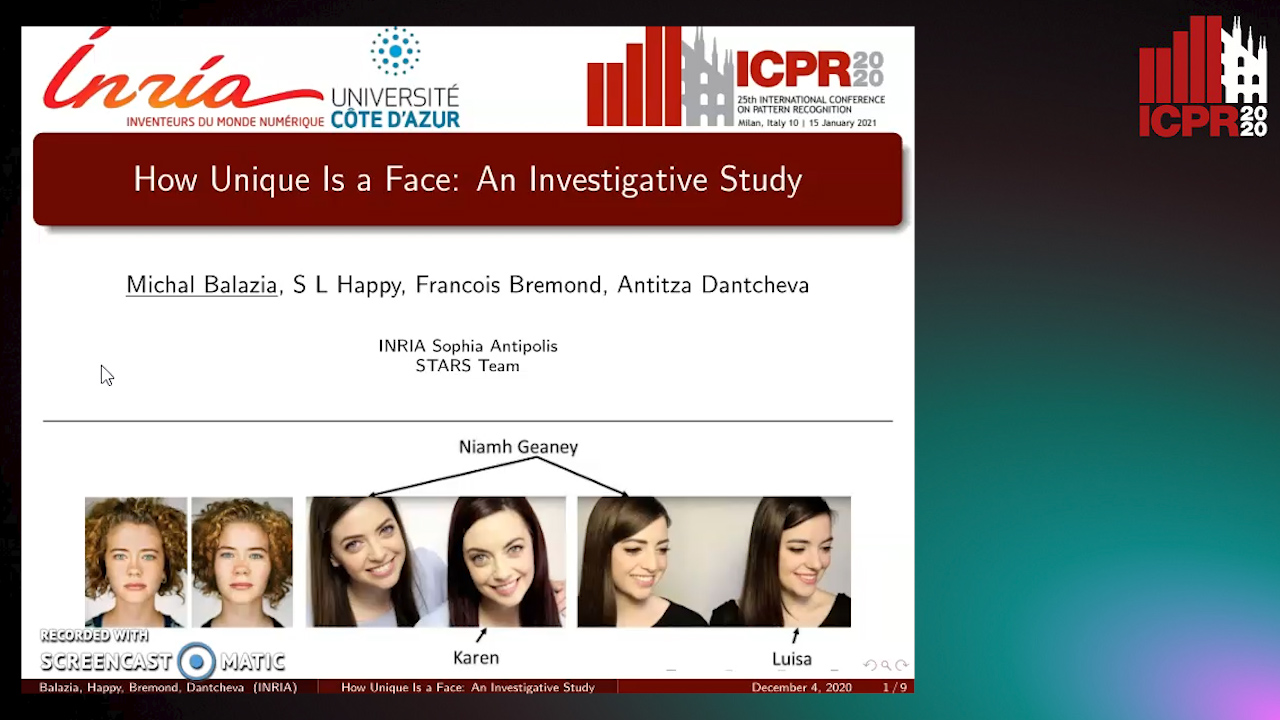
Auto-TLDR; Uniqueness of Face Recognition: Exploring the Impact of Factors such as image resolution, feature representation, database size, age and gender
Abstract Slides Poster Similar
Hierarchical Deep Hashing for Fast Large Scale Image Retrieval
Yongfei Zhang, Cheng Peng, Zhang Jingtao, Xianglong Liu, Shiliang Pu, Changhuai Chen
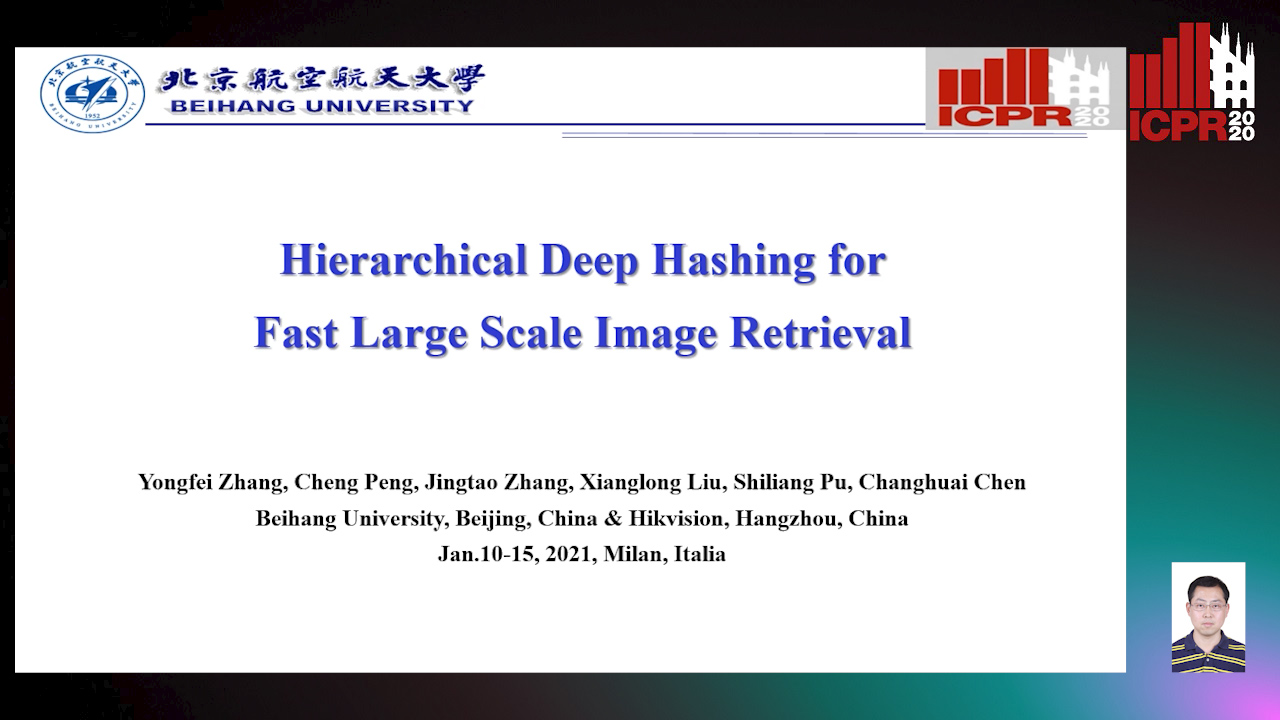
Auto-TLDR; Hierarchical indexed deep hashing for fast large scale image retrieval
Abstract Slides Poster Similar
Face Anti-Spoofing Based on Dynamic Color Texture Analysis Using Local Directional Number Pattern
Junwei Zhou, Ke Shu, Peng Liu, Jianwen Xiang, Shengwu Xiong
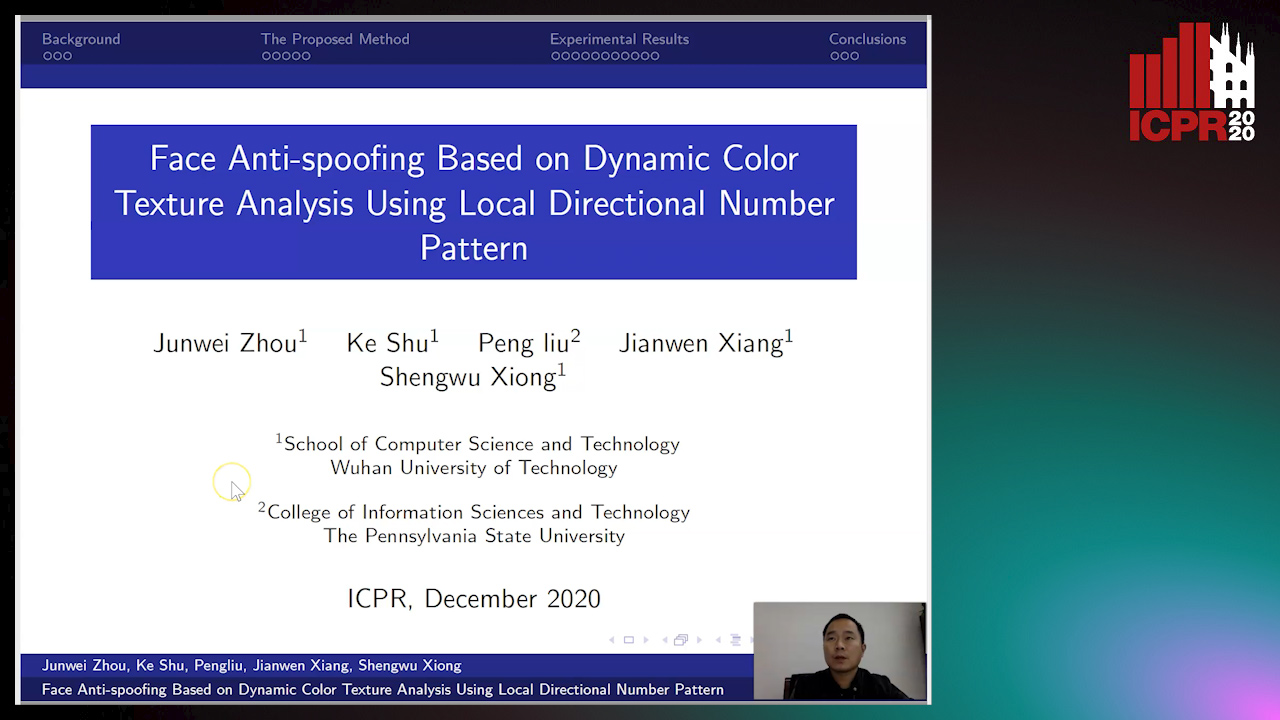
Auto-TLDR; LDN-TOP Representation followed by ProCRC Classification for Face Anti-Spoofing
Abstract Slides Poster Similar
Exploring Seismocardiogram Biometrics with Wavelet Transform
Po-Ya Hsu, Po-Han Hsu, Hsin-Li Liu
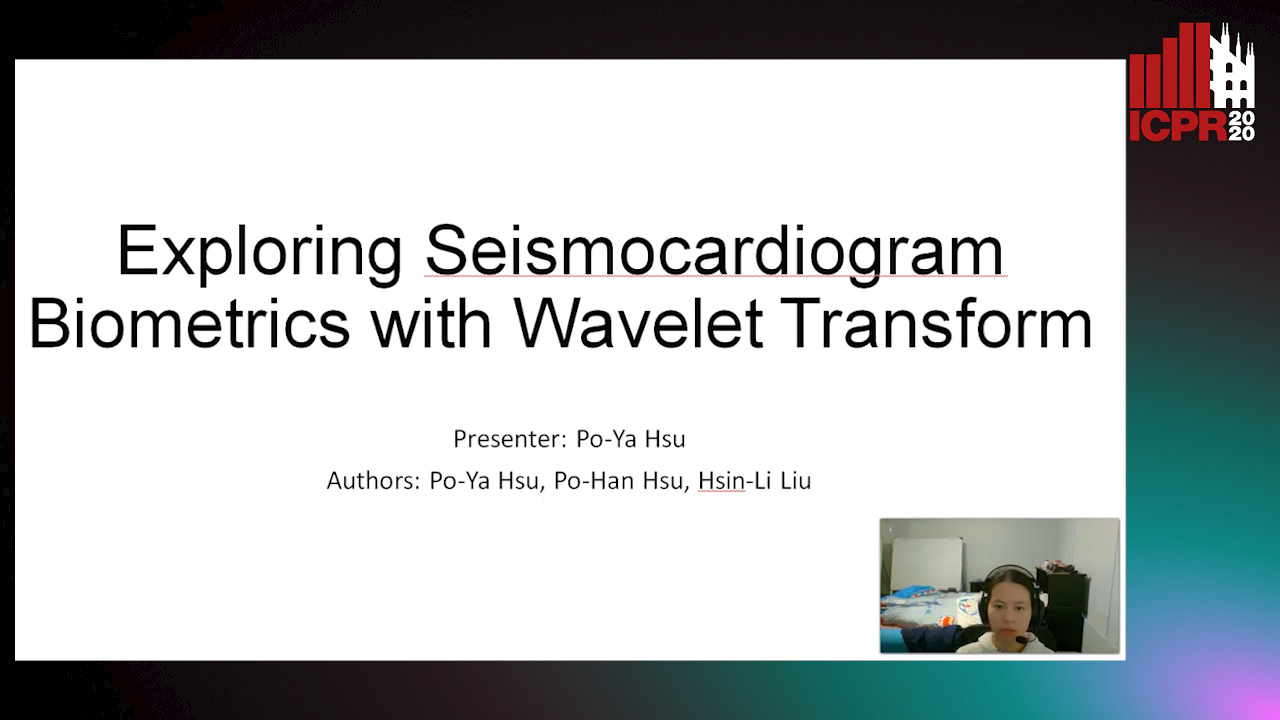
Auto-TLDR; Seismocardiogram Biometric Matching Using Wavelet Transform and Deep Learning Models
Abstract Slides Poster Similar
Level Three Synthetic Fingerprint Generation
Andre Wyzykowski, Mauricio Pamplona Segundo, Rubisley Lemes

Auto-TLDR; Synthesis of High-Resolution Fingerprints with Pore Detection Using CycleGAN
Abstract Slides Poster Similar
VSB^2-Net: Visual-Semantic Bi-Branch Network for Zero-Shot Hashing
Xin Li, Xiangfeng Wang, Bo Jin, Wenjie Zhang, Jun Wang, Hongyuan Zha

Auto-TLDR; VSB^2-Net: inductive zero-shot hashing for image retrieval
Abstract Slides Poster Similar
Finger Vein Recognition and Intra-Subject Similarity Evaluation of Finger Veins Using the CNN Triplet Loss
Georg Wimmer, Bernhard Prommegger, Andreas Uhl
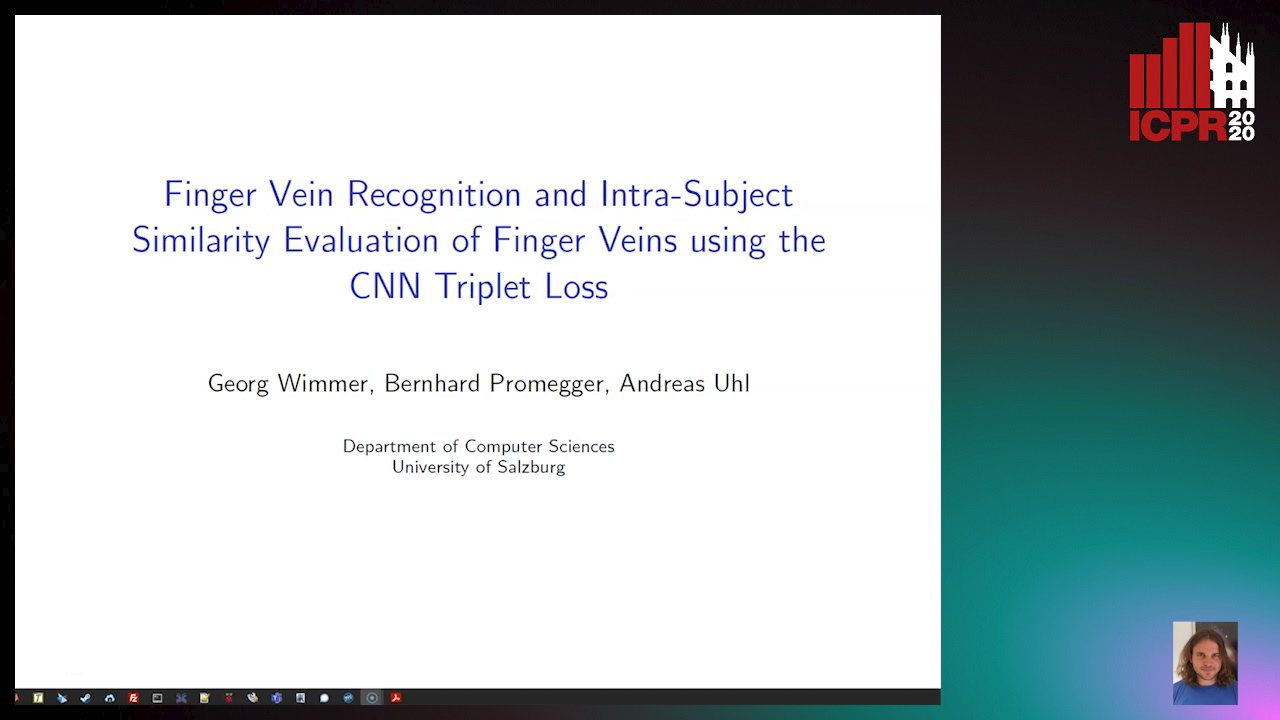
Auto-TLDR; Finger vein recognition using CNNs and hard triplet online selection
Abstract Slides Poster Similar
3D Facial Matching by Spiral Convolutional Metric Learning and a Biometric Fusion-Net of Demographic Properties
Soha Sadat Mahdi, Nele Nauwelaers, Philip Joris, Giorgos Bouritsas, Imperial London, Sergiy Bokhnyak, Susan Walsh, Mark Shriver, Michael Bronstein, Peter Claes

Auto-TLDR; Multi-biometric Fusion for Biometric Verification using 3D Facial Mesures
Compression Strategies and Space-Conscious Representations for Deep Neural Networks
Giosuè Marinò, Gregorio Ghidoli, Marco Frasca, Dario Malchiodi

Auto-TLDR; Compression of Large Convolutional Neural Networks by Weight Pruning and Quantization
Abstract Slides Poster Similar
Detection of Makeup Presentation Attacks Based on Deep Face Representations
Christian Rathgeb, Pawel Drozdowski, Christoph Busch
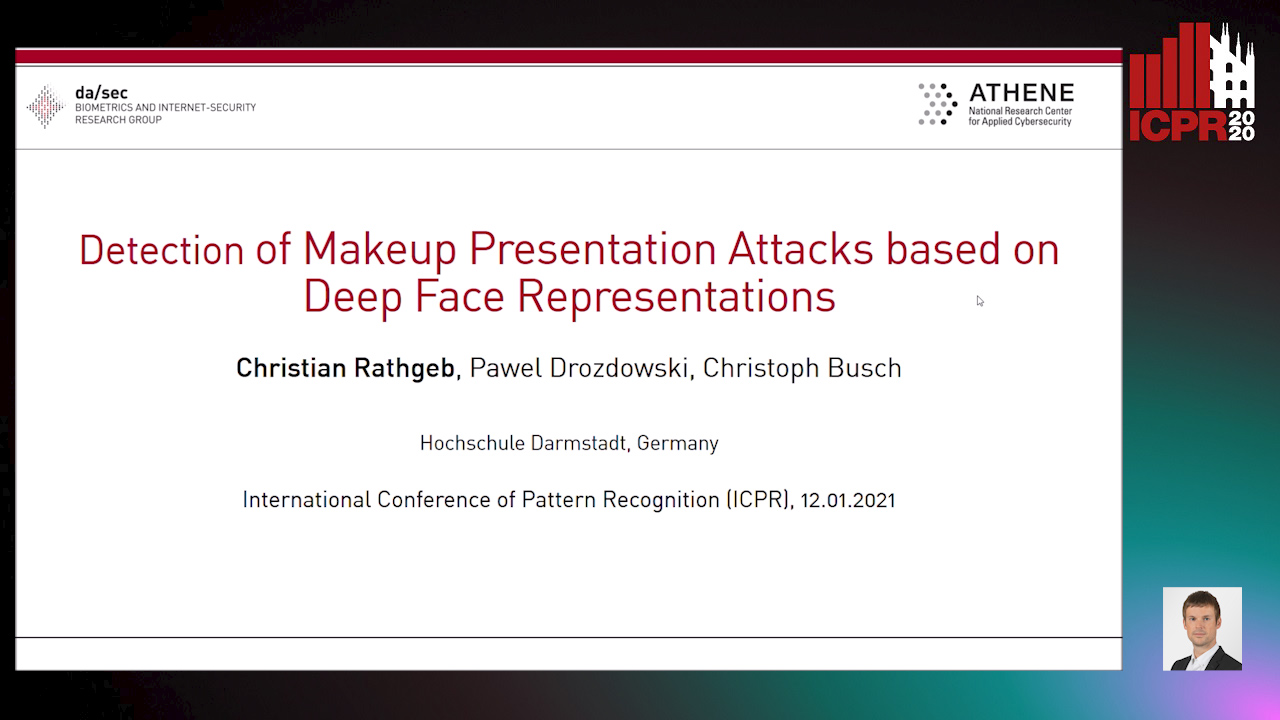
Auto-TLDR; An Attack Detection Scheme for Face Recognition Using Makeup Presentation Attacks
Abstract Slides Poster Similar
Fingerprints, Forever Young?
Roman Kessler, Olaf Henniger, Christoph Busch
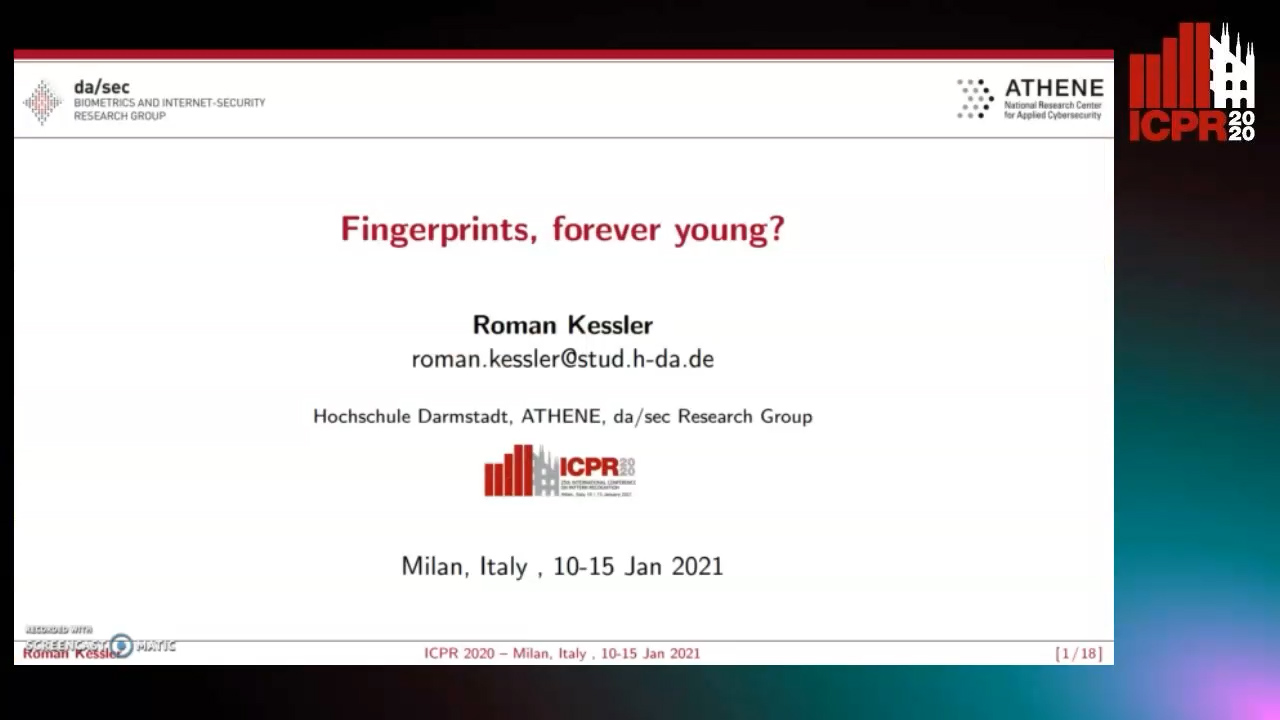
Auto-TLDR; Mated Similarity Scores for Fingerprint Recognition: A Hierarchical Linear Model
Abstract Slides Poster Similar
Discrete Semantic Matrix Factorization Hashing for Cross-Modal Retrieval
Jianyang Qin, Lunke Fei, Shaohua Teng, Wei Zhang, Genping Zhao, Haoliang Yuan

Auto-TLDR; Discrete Semantic Matrix Factorization Hashing for Cross-Modal Retrieval
Abstract Slides Poster Similar
Fast Discrete Cross-Modal Hashing Based on Label Relaxation and Matrix Factorization
Donglin Zhang, Xiaojun Wu, Zhen Liu, Jun Yu, Josef Kittler

Auto-TLDR; LRMF: Label Relaxation and Discrete Matrix Factorization for Cross-Modal Retrieval
Leveraging Quadratic Spherical Mutual Information Hashing for Fast Image Retrieval
Nikolaos Passalis, Anastasios Tefas
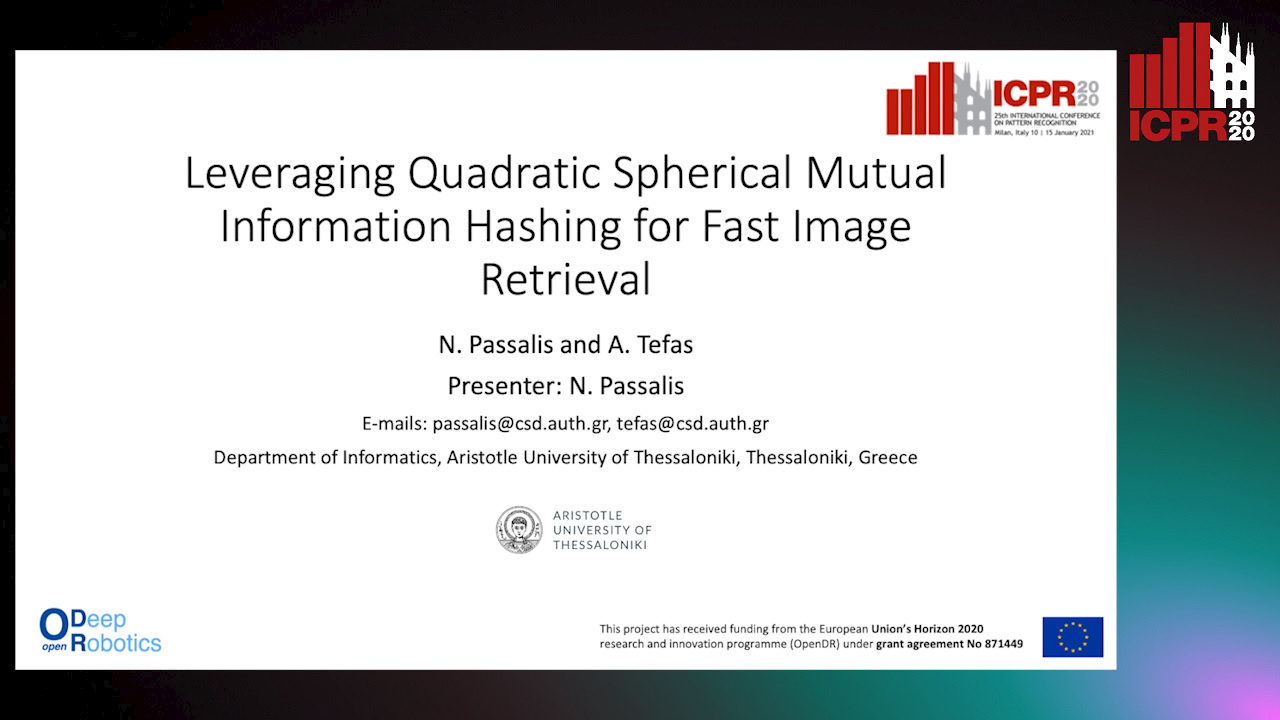
Auto-TLDR; Quadratic Mutual Information for Large-Scale Hashing and Information Retrieval
Abstract Slides Poster Similar
Cross-spectrum Face Recognition Using Subspace Projection Hashing
Hanrui Wang, Xingbo Dong, Jin Zhe, Jean-Luc Dugelay, Massimo Tistarelli
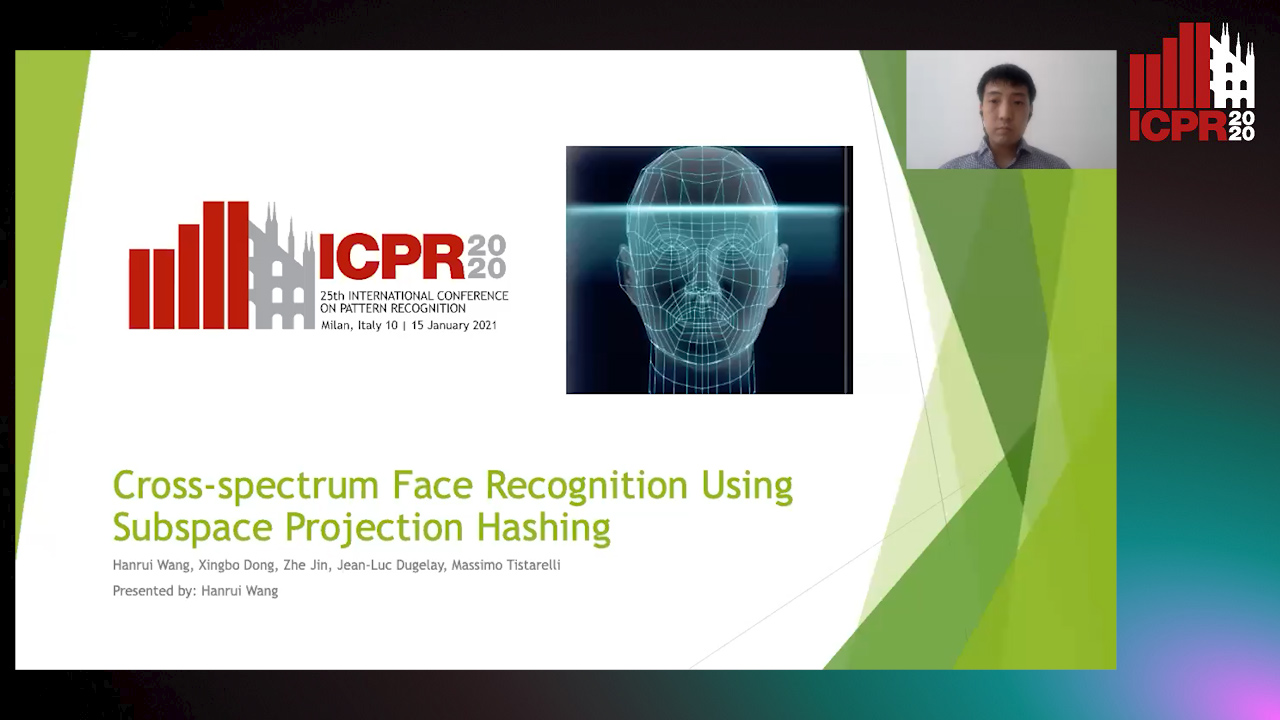
Auto-TLDR; Subspace Projection Hashing for Cross-Spectrum Face Recognition
Abstract Slides Poster Similar
Are Spoofs from Latent Fingerprints a Real Threat for the Best State-Of-Art Liveness Detectors?
Roberto Casula, Giulia Orrù, Daniele Angioni, Xiaoyi Feng, Gian Luca Marcialis, Fabio Roli

Auto-TLDR; ScreenSpoof: Attacks using latent fingerprints against state-of-art fingerprint liveness detectors and verification systems
Local Attention and Global Representation Collaborating for Fine-Grained Classification
He Zhang, Yunming Bai, Hui Zhang, Jing Liu, Xingguang Li, Zhaofeng He

Auto-TLDR; Weighted Region Network for Cosmetic Contact Lenses Detection
Abstract Slides Poster Similar
Object Classification of Remote Sensing Images Based on Optimized Projection Supervised Discrete Hashing
Qianqian Zhang, Yazhou Liu, Quansen Sun
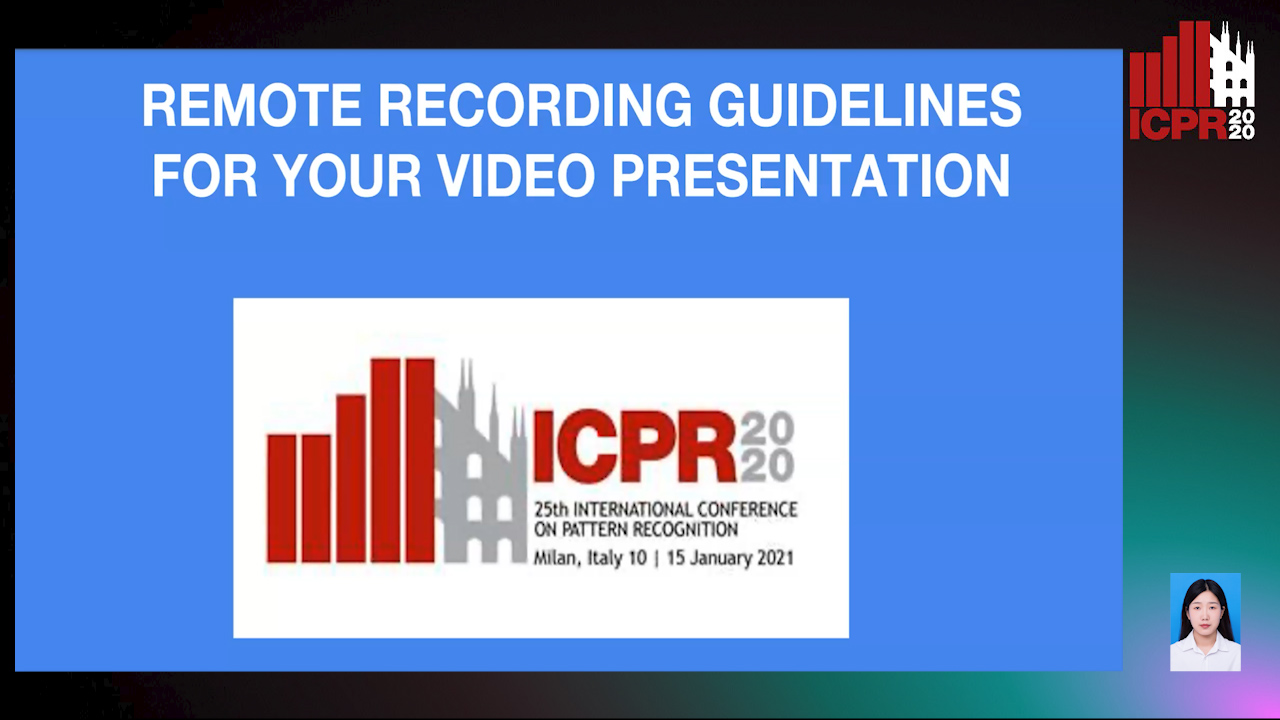
Auto-TLDR; Optimized Projection Supervised Discrete Hashing for Large-Scale Remote Sensing Image Object Classification
Abstract Slides Poster Similar
A Local Descriptor with Physiological Characteristic for Finger Vein Recognition
Liping Zhang, Weijun Li, Ning Xin

Auto-TLDR; Finger vein-specific local feature descriptors based physiological characteristic of finger vein patterns
Abstract Slides Poster Similar
Robust Image Coding on Synthetic DNA: Reducing Sequencing Noise with Inpainting
Eva Gil San Antonio, Mattia Piretti, Melpomeni Dimopoulou, Marc Antonini

Auto-TLDR; Noise Resilience for DNA Storage
Abstract Slides Poster Similar
Super-Resolution Guided Pore Detection for Fingerprint Recognition
Syeda Nyma Ferdous, Ali Dabouei, Jeremy Dawson, Nasser M. Nasarabadi

Auto-TLDR; Super-Resolution Generative Adversarial Network for Fingerprint Recognition Using Pore Features
Abstract Slides Poster Similar
DFH-GAN: A Deep Face Hashing with Generative Adversarial Network
Bo Xiao, Lanxiang Zhou, Yifei Wang, Qiangfang Xu

Auto-TLDR; Deep Face Hashing with GAN for Face Image Retrieval
Abstract Slides Poster Similar
Cross-Media Hash Retrieval Using Multi-head Attention Network
Zhixin Li, Feng Ling, Chuansheng Xu, Canlong Zhang, Huifang Ma
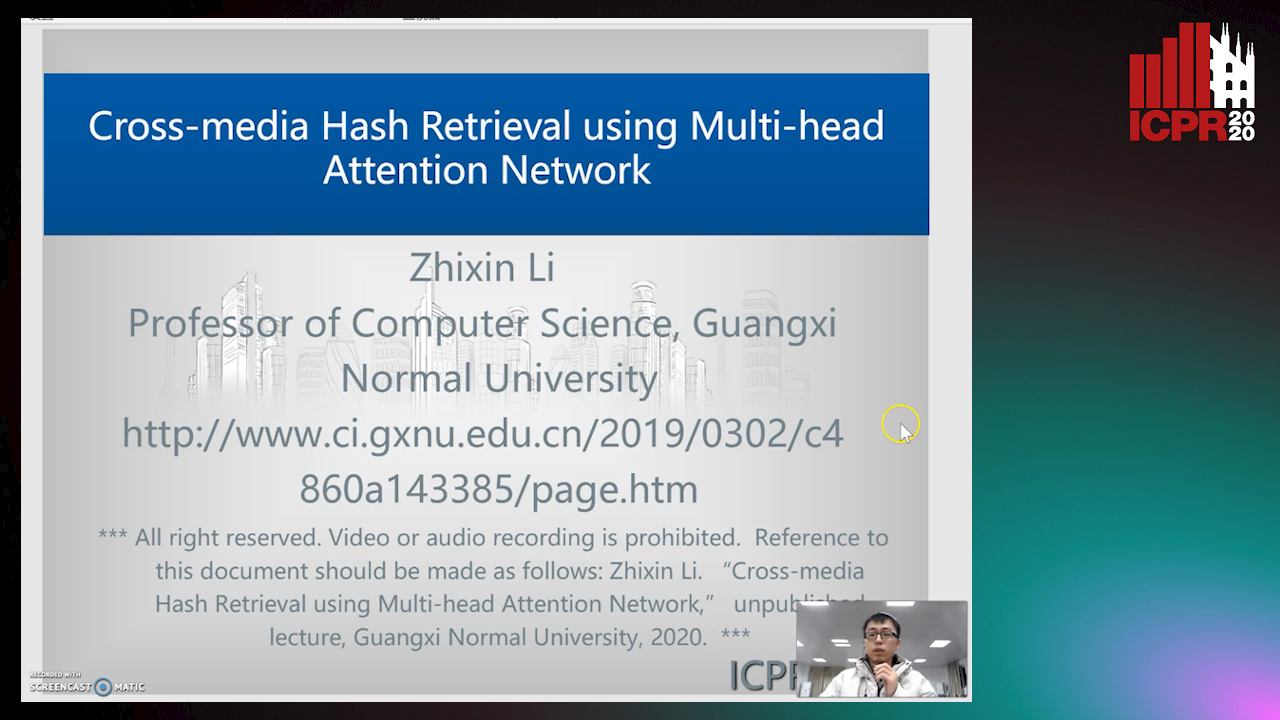
Auto-TLDR; Unsupervised Cross-Media Hash Retrieval Using Multi-Head Attention Network
Abstract Slides Poster Similar
Human or Machine? It Is Not What You Write, but How You Write It
Luis Leiva, Moises Diaz, M.A. Ferrer, Réjean Plamondon
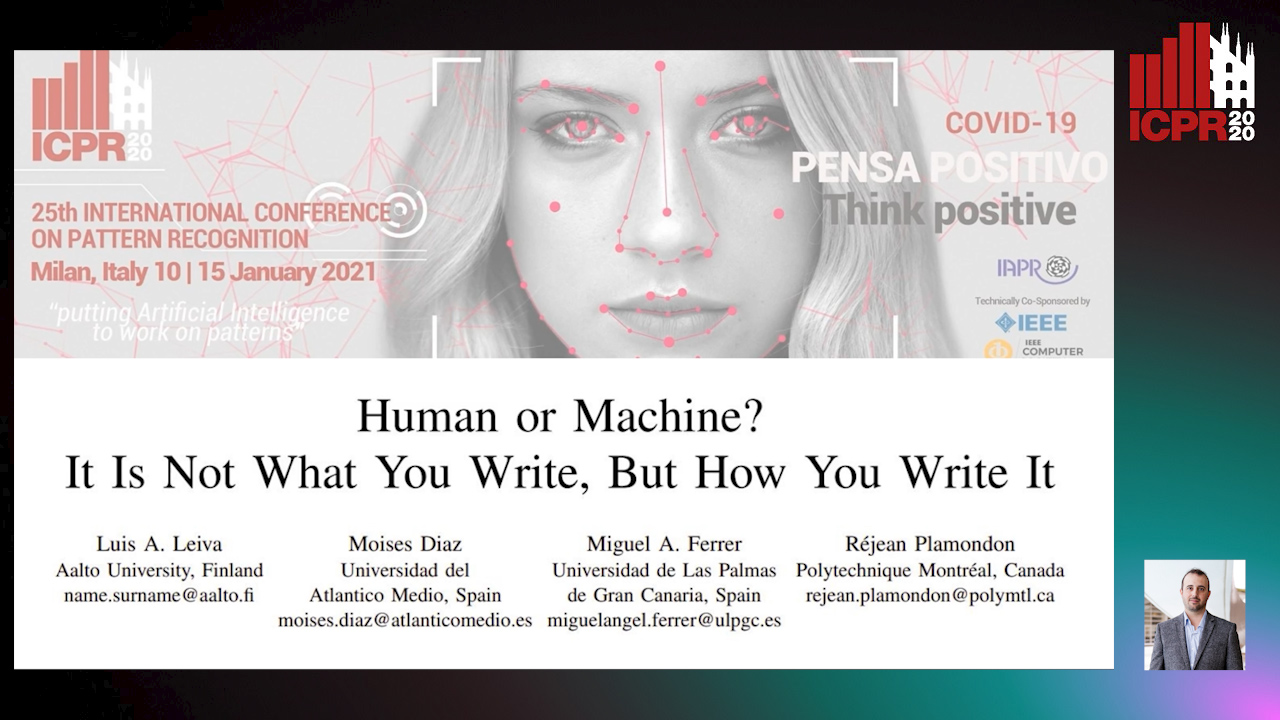
Auto-TLDR; Behavioral Biometrics via Handwritten Symbols for Identification and Verification
Abstract Slides Poster Similar
Viability of Optical Coherence Tomography for Iris Presentation Attack Detection

Auto-TLDR; Optical Coherence Tomography Imaging for Iris Presentation Attack Detection
Abstract Slides Poster Similar
Disentangled Representation Based Face Anti-Spoofing
Zhao Liu, Zunlei Feng, Yong Li, Zeyu Zou, Rong Zhang, Mingli Song, Jianping Shen
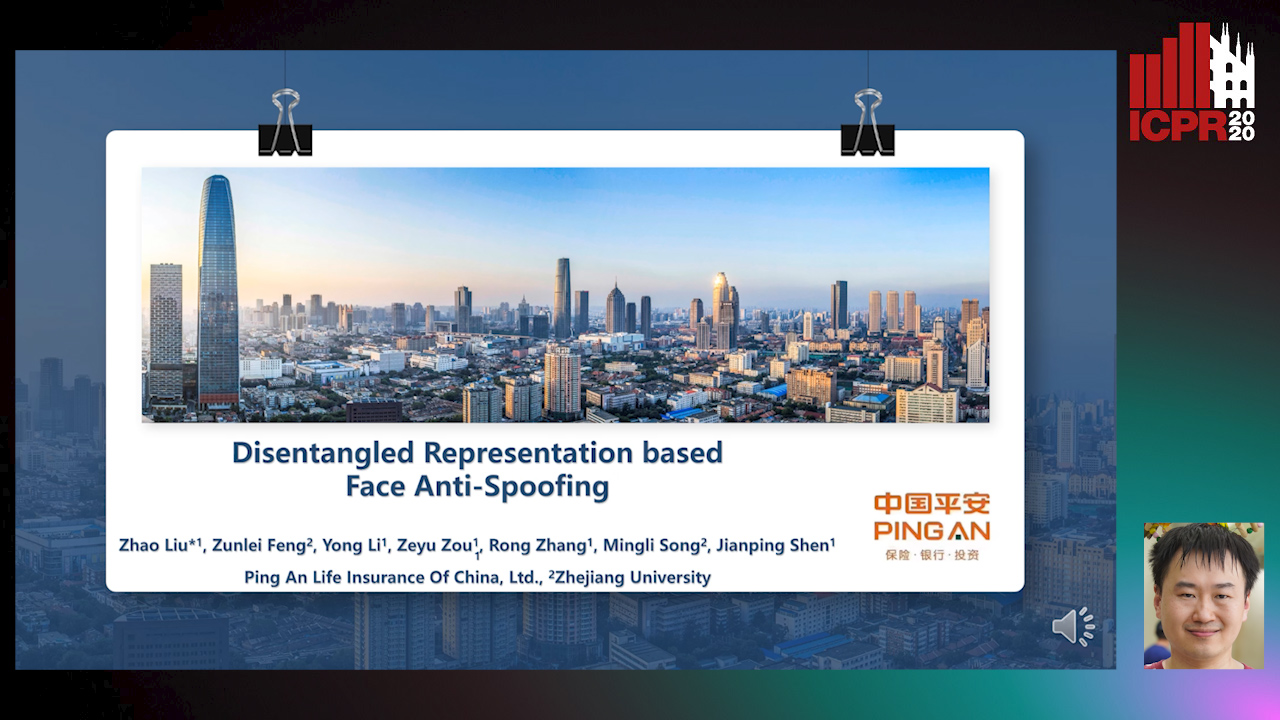
Auto-TLDR; Face Anti-Spoofing using Motion Information and Disentangled Frame Work
Abstract Slides Poster Similar
Joint Compressive Autoencoders for Full-Image-To-Image Hiding
Xiyao Liu, Ziping Ma, Xingbei Guo, Jialu Hou, Lei Wang, Gerald Schaefer, Hui Fang

Auto-TLDR; J-CAE: Joint Compressive Autoencoder for Image Hiding
Abstract Slides Poster Similar
Fast Approximate Modelling of the Next Combination Result for Stopping the Text Recognition in a Video
Konstantin Bulatov, Nadezhda Fedotova, Vladimir V. Arlazarov
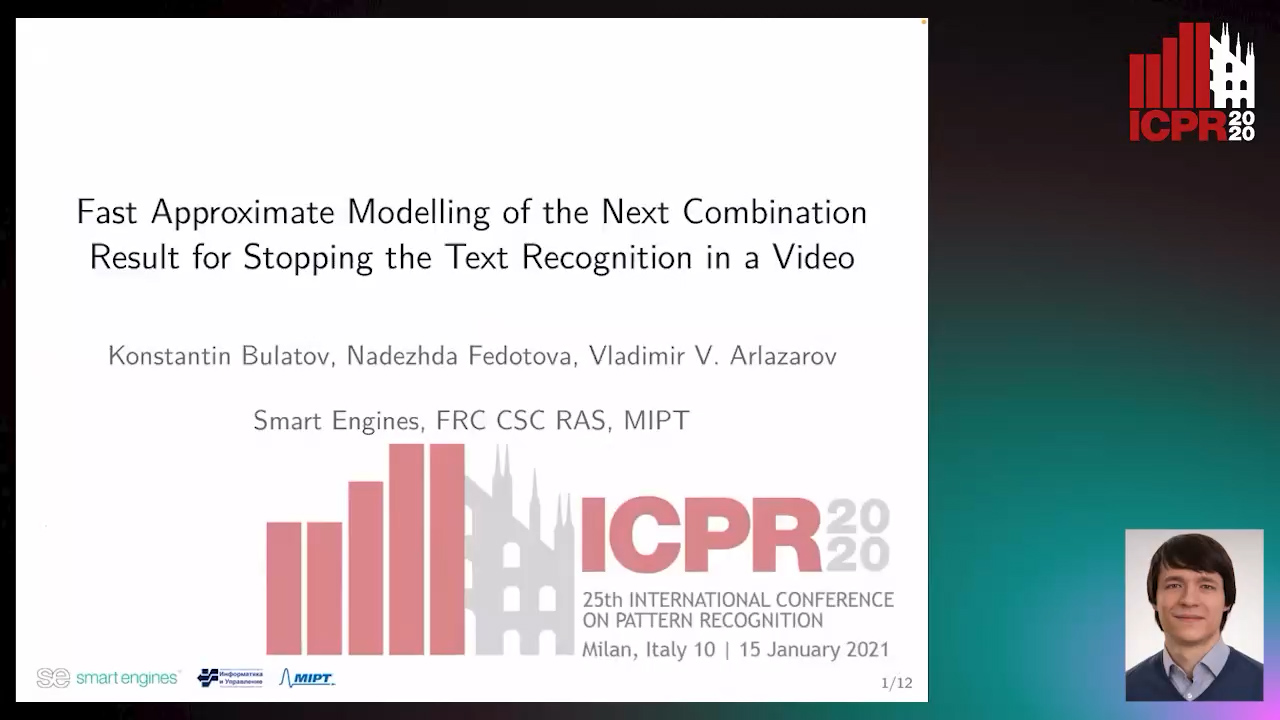
Auto-TLDR; Stopping Video Stream Recognition of a Text Field Using Optimized Computation Scheme
Abstract Slides Poster Similar
Label Self-Adaption Hashing for Image Retrieval
Jianglin Lu, Zhihui Lai, Hailing Wang, Jie Zhou
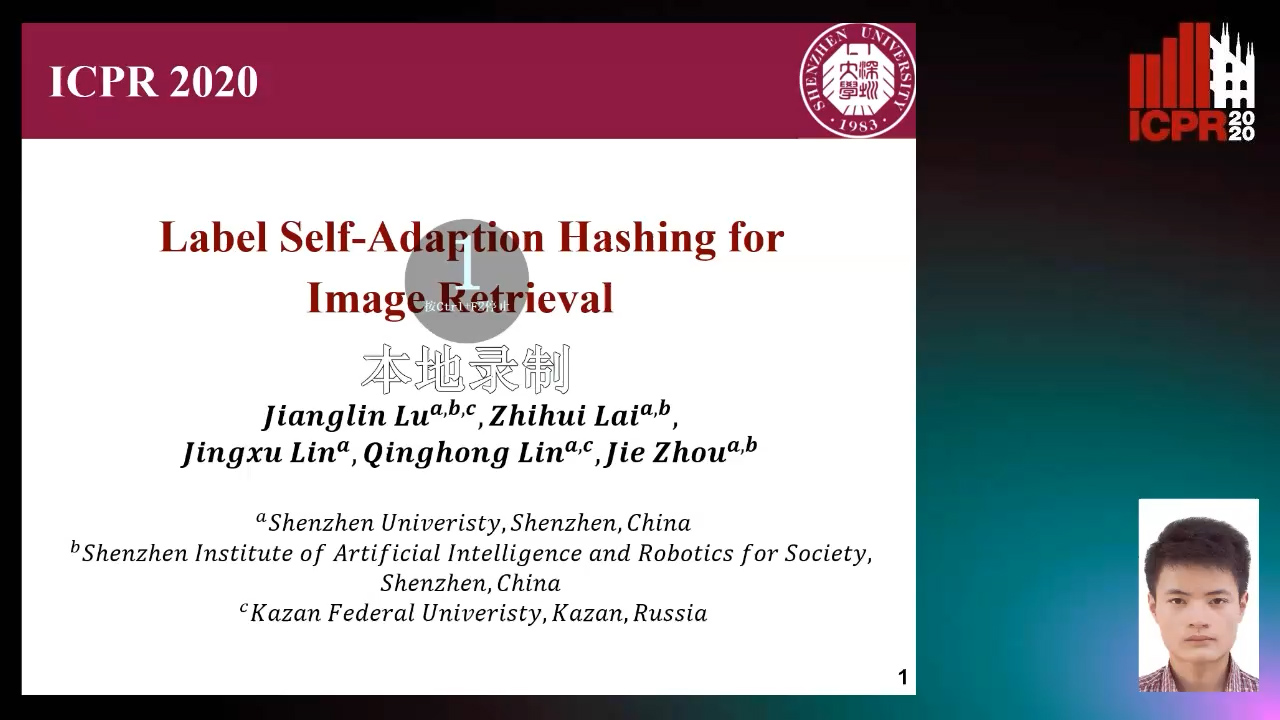
Auto-TLDR; Label Self-Adaption Hashing for Large-Scale Image Retrieval
Abstract Slides Poster Similar
Deep Gait Relative Attribute Using a Signed Quadratic Contrastive Loss
Yuta Hayashi, Shehata Allam, Yasushi Makihara, Daigo Muramatsu, Yasushi Yagi

Auto-TLDR; Signal-Contrastive Loss for Gait Attributes Estimation
MixNet for Generalized Face Presentation Attack Detection
Nilay Sanghvi, Sushant Singh, Akshay Agarwal, Mayank Vatsa, Richa Singh

Auto-TLDR; MixNet: A Deep Learning-based Network for Detection of Presentation Attacks in Cross-Database and Unseen Setting
Abstract Slides Poster Similar
Learning Disentangled Representations for Identity Preserving Surveillance Face Camouflage
Jingzhi Li, Lutong Han, Hua Zhang, Xiaoguang Han, Jingguo Ge, Xiaochu Cao

Auto-TLDR; Individual Face Privacy under Surveillance Scenario with Multi-task Loss Function
Improved Deep Classwise Hashing with Centers Similarity Learning for Image Retrieval
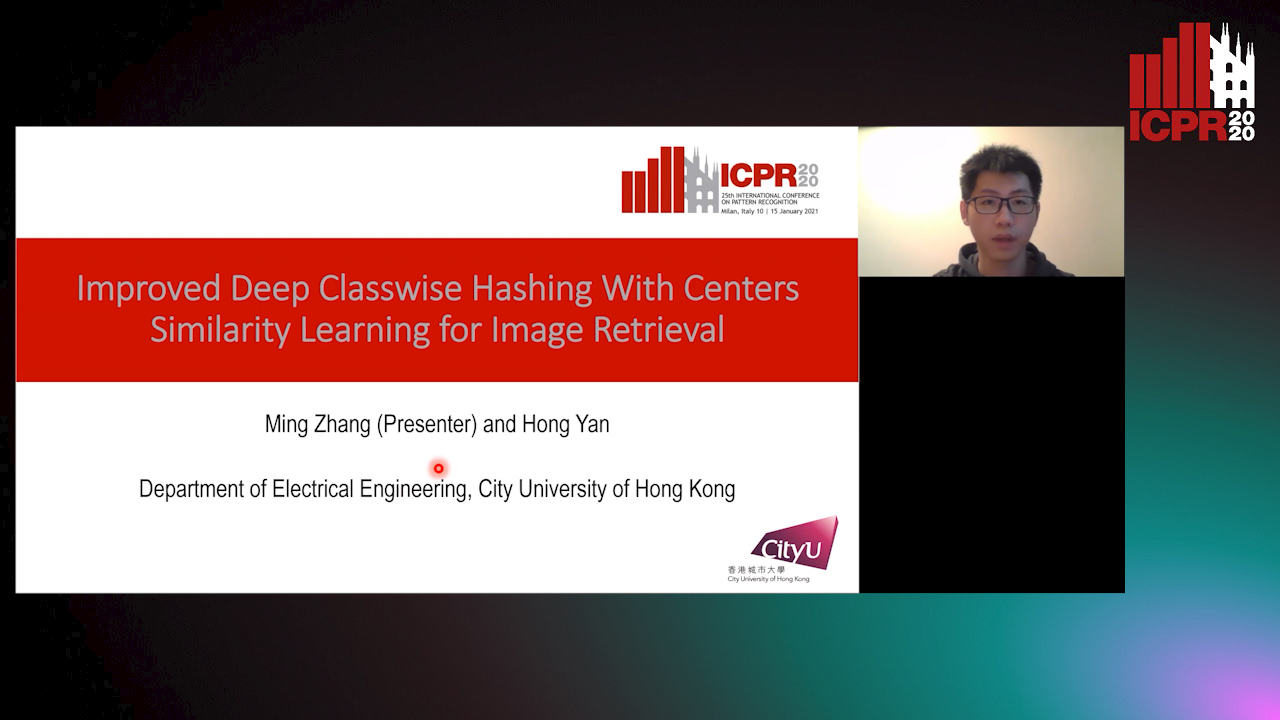
Auto-TLDR; Deep Classwise Hashing for Image Retrieval Using Center Similarity Learning
Abstract Slides Poster Similar
Computational Data Analysis for First Quantization Estimation on JPEG Double Compressed Images
Sebastiano Battiato, Oliver Giudice, Francesco Guarnera, Giovanni Puglisi

Auto-TLDR; Exploiting Discrete Cosine Transform Coefficients for Multimedia Forensics
Abstract Slides Poster Similar
Face Anti-Spoofing Using Spatial Pyramid Pooling
Lei Shi, Zhuo Zhou, Zhenhua Guo

Auto-TLDR; Spatial Pyramid Pooling for Face Anti-Spoofing
Abstract Slides Poster Similar
An Investigation of Feature Selection and Transfer Learning for Writer-Independent Offline Handwritten Signature Verification
Victor Souza, Adriano Oliveira, Rafael Menelau Oliveira E Cruz, Robert Sabourin
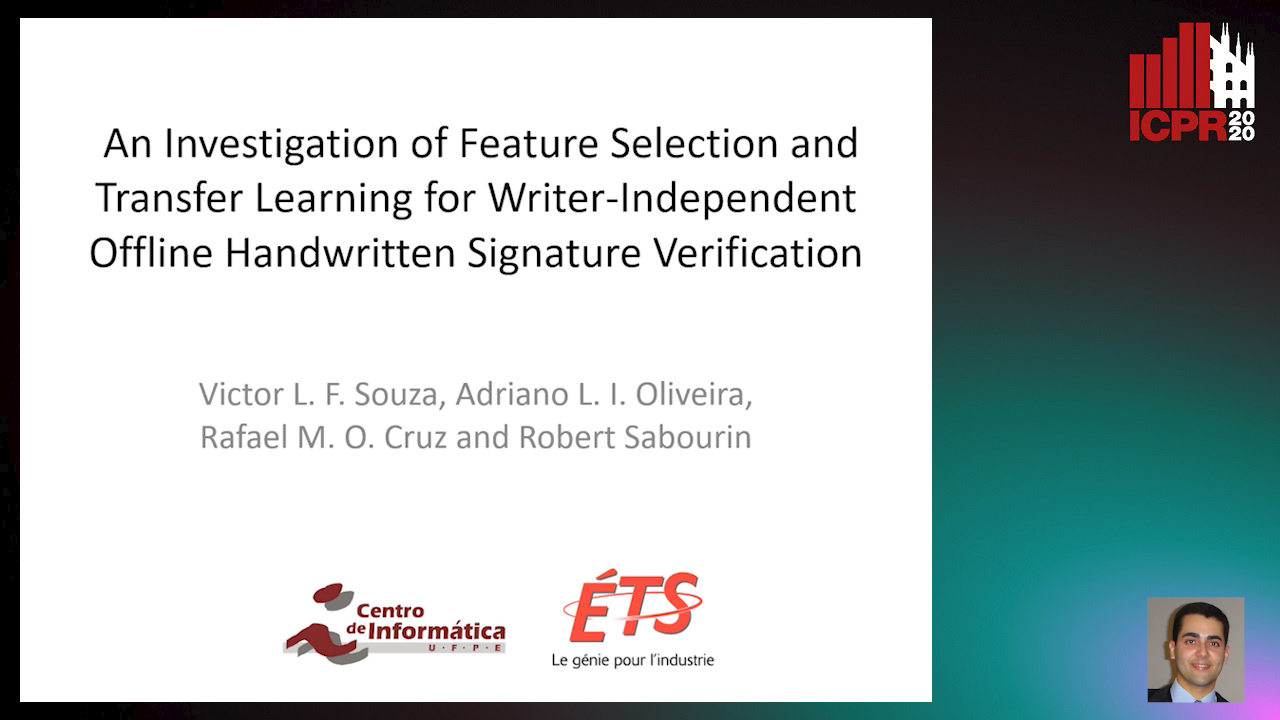
Auto-TLDR; Overfitting of SigNet using Binary Particle Swarm Optimization
Abstract Slides Poster Similar
Generalized Iris Presentation Attack Detection Algorithm under Cross-Database Settings
Mehak Gupta, Vishal Singh, Akshay Agarwal, Mayank Vatsa, Richa Singh
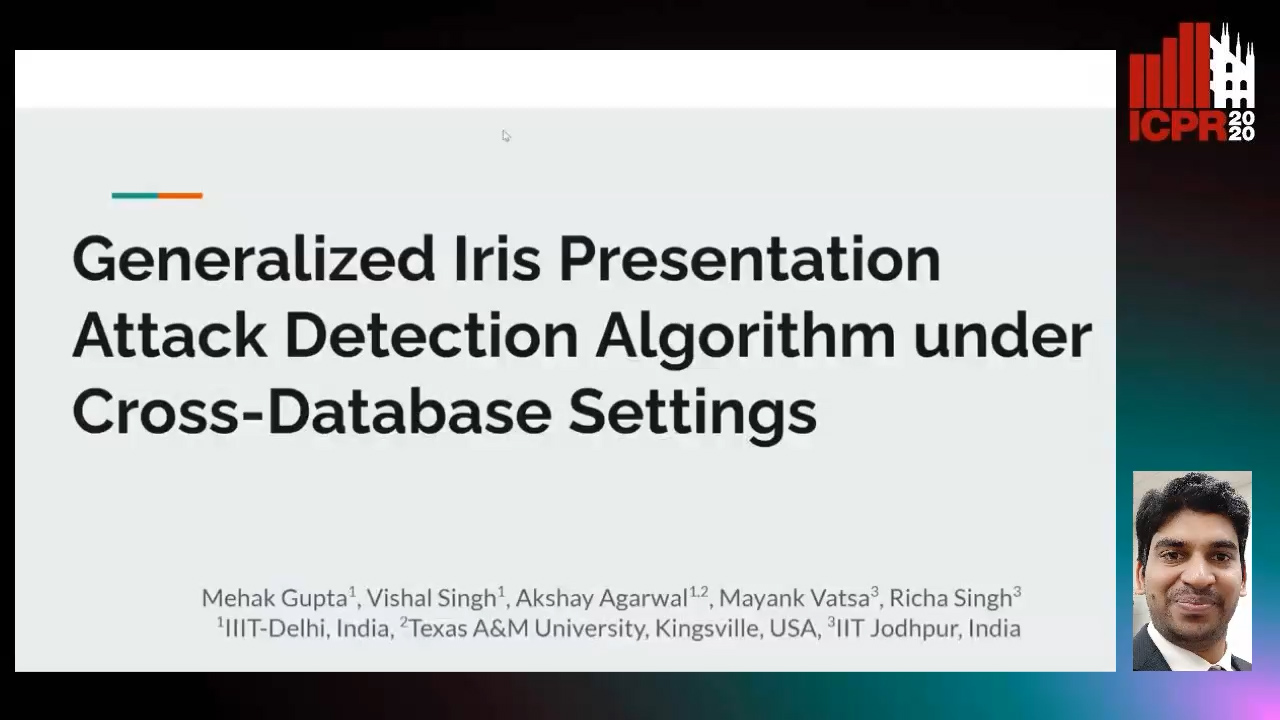
Auto-TLDR; MVNet: A Deep Learning-based PAD Network for Iris Recognition against Presentation Attacks
Abstract Slides Poster Similar
Creating Classifier Ensembles through Meta-Heuristic Algorithms for Aerial Scene Classification
Álvaro Roberto Ferreira Jr., Gustavo Gustavo Henrique De Rosa, Joao Paulo Papa, Gustavo Carneiro, Fabio Augusto Faria
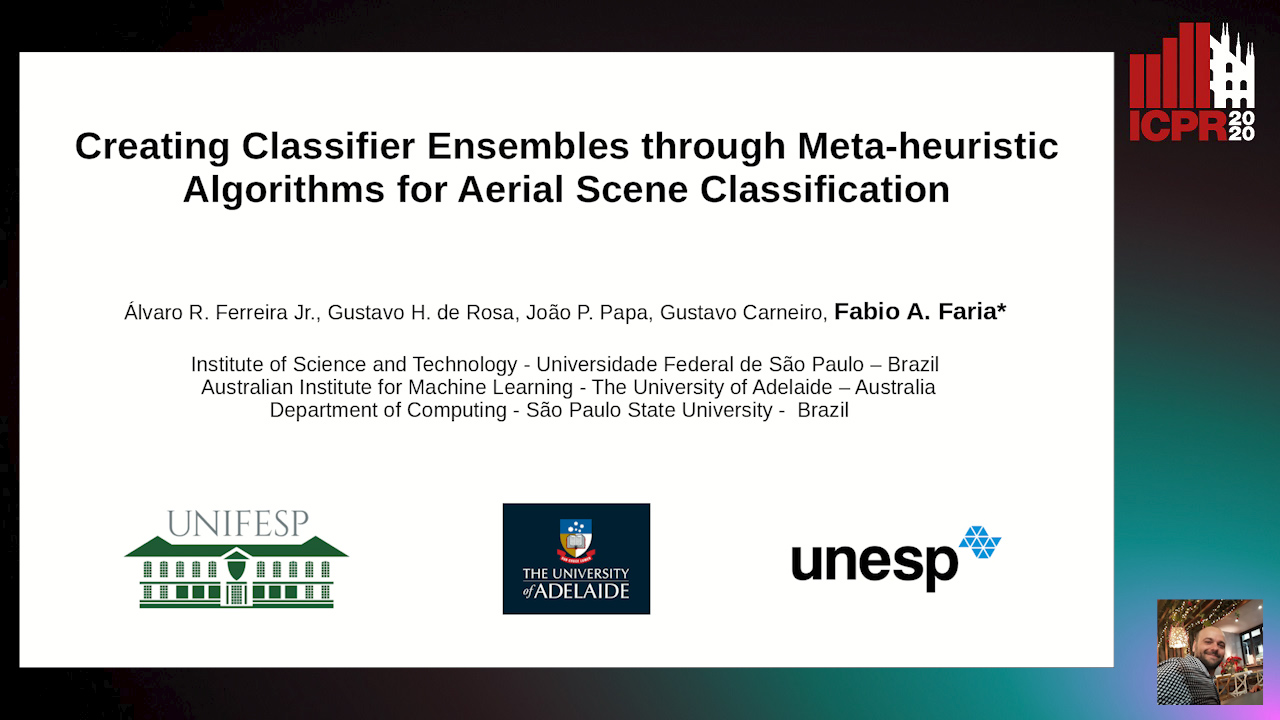
Auto-TLDR; Univariate Marginal Distribution Algorithm for Aerial Scene Classification Using Meta-Heuristic Optimization
Abstract Slides Poster Similar
Exploiting Local Indexing and Deep Feature Confidence Scores for Fast Image-To-Video Search
Savas Ozkan, Gözde Bozdağı Akar

Auto-TLDR; Fast and Robust Image-to-Video Retrieval Using Local and Global Descriptors
Abstract Slides Poster Similar
Countering Anti-Forensics of SIFT-Based Copy-Move Detection
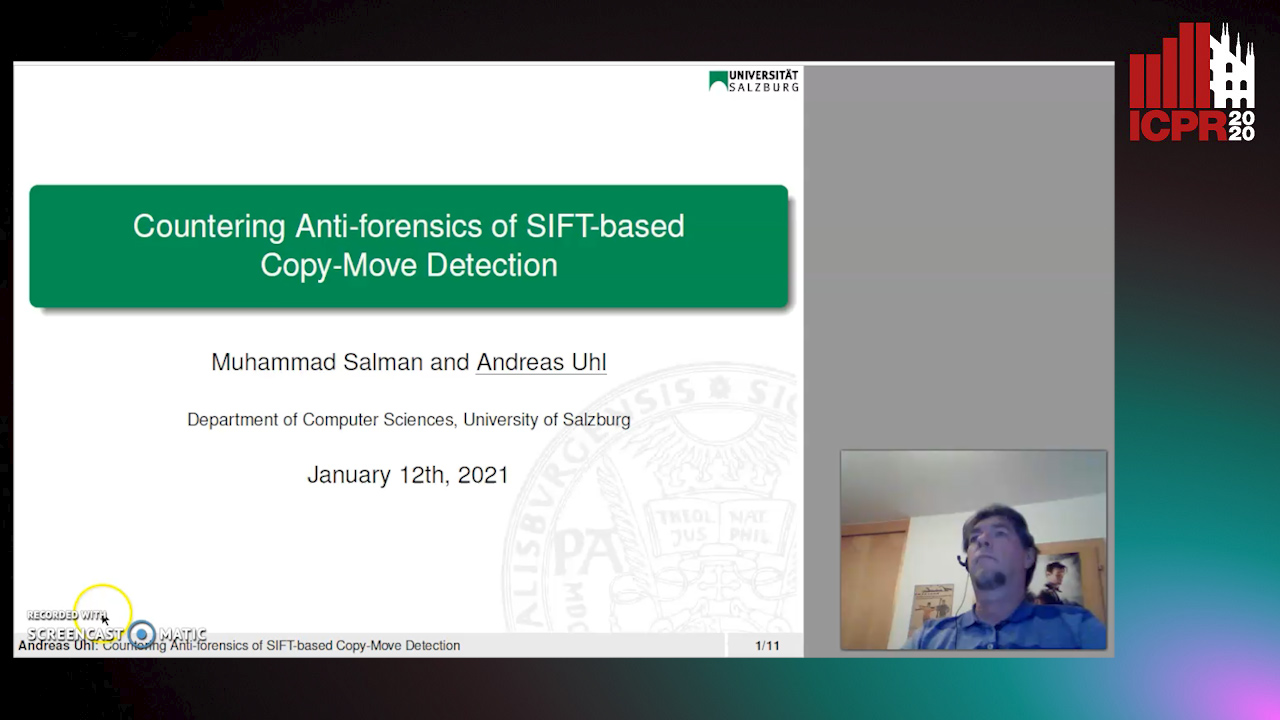
Auto-TLDR; Countering SIFT Keypoint Removal for Image Forgery Detection by Changing to a Different Type of Keypoints
Abstract Slides Poster Similar
3D Dental Biometrics: Automatic Pose-Invariant Dental Arch Extraction and Matching

Auto-TLDR; Automatic Dental Arch Extraction and Matching for 3D Dental Identification using Laser-Scanned Plasters
Abstract Slides Poster Similar
RobusterNet: Improving Copy-Move Forgery Detection with Volterra-Based Convolutions
Efthimia Kafali, Nicholas Vretos, Theodoros Semertzidis, Petros Daras
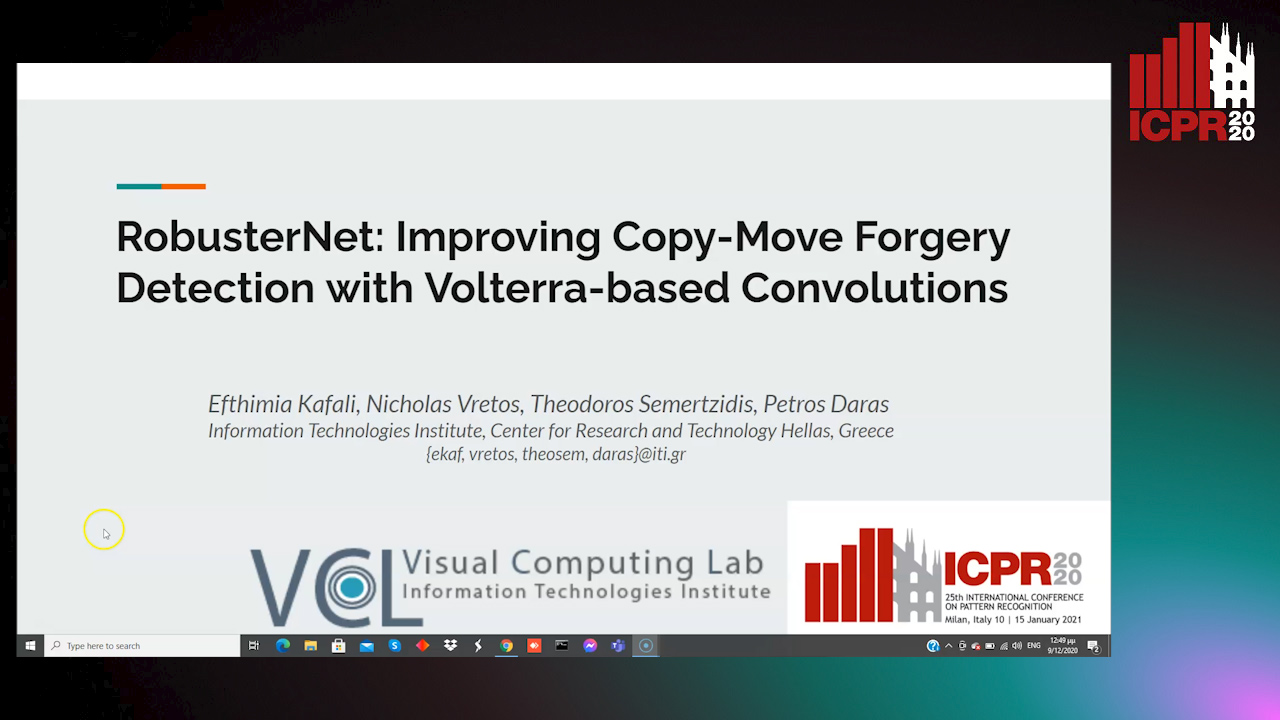
Auto-TLDR; Convolutional Neural Networks with Nonlinear Inception for Copy-Move Forgery Detection
Exposing Deepfake Videos by Tracking Eye Movements
Meng Li, Beibei Liu, Yujiang Hu, Yufei Wang

Auto-TLDR; A Novel Approach to Detecting Deepfake Videos
Abstract Slides Poster Similar
Rotation Detection in Finger Vein Biometrics Using CNNs
Bernhard Prommegger, Georg Wimmer, Andreas Uhl

Auto-TLDR; A CNN based rotation detector for finger vein recognition
Abstract Slides Poster Similar
Deep Composer: A Hash-Based Duplicative Neural Network for Generating Multi-Instrument Songs
Jacob Galajda, Brandon Royal, Kien Hua

Auto-TLDR; Deep Composer for Intelligence Duplication